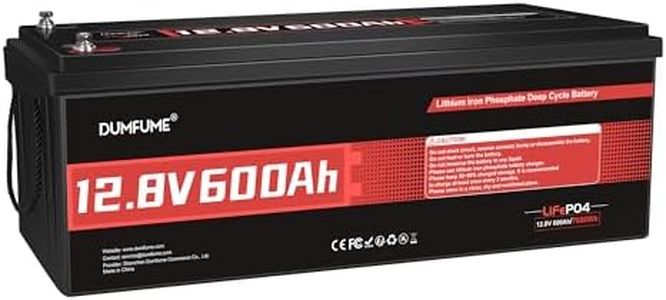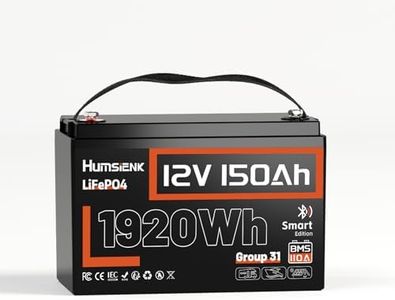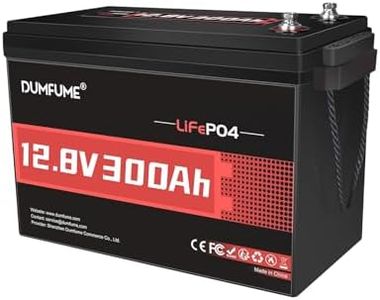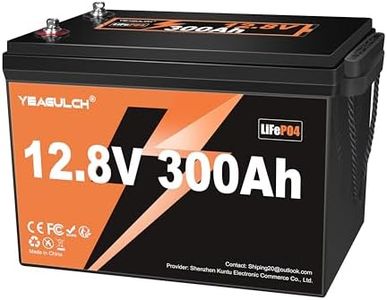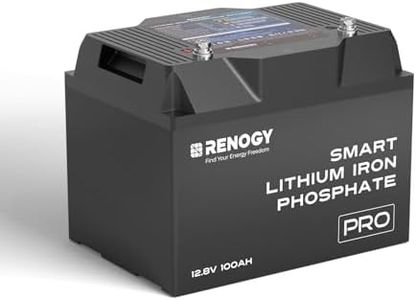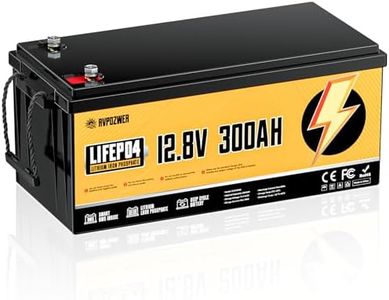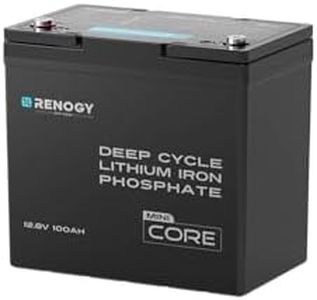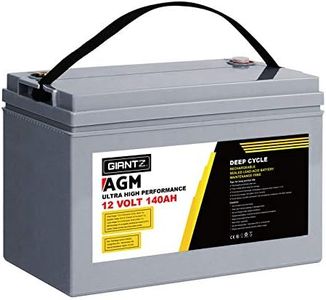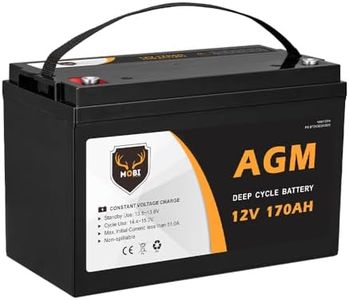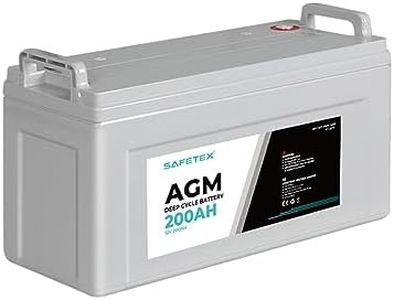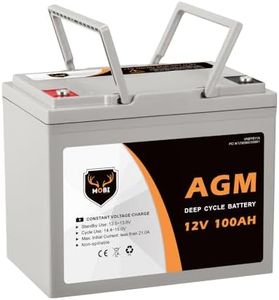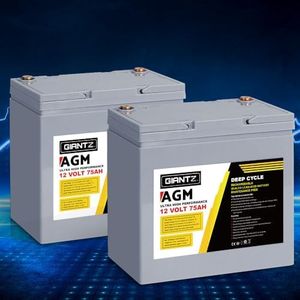We Use CookiesWe use cookies to enhance the security, performance,
functionality and for analytical and promotional activities. By continuing to browse this site you
are agreeing to our privacy policy
10 Best Deep Cycle Rv Batteries
From leading brands and best sellers available on the web.Buying Guide for the Best Deep Cycle Rv Batteries
Choosing the right deep-cycle RV battery is important to ensure you have enough reliable power for all your needs when staying off-grid or traveling. Deep-cycle batteries are designed to provide a steady amount of power over a longer period, and they can be discharged and recharged many times. Picking the best fit involves understanding how you’ll use your RV, how much energy your appliances consume, and how often you need to recharge. Considering the key specifications will help you match the battery to your travel habits and power needs.Battery Type (Chemistry)Deep-cycle RV batteries come in several types, including Flooded Lead-Acid (FLA), Absorbent Glass Mat (AGM), Gel, and Lithium. Battery type determines how the battery performs, how much maintenance is needed, and its lifespan. Flooded Lead-Acid batteries require regular maintenance and checking water levels but are the most affordable. AGM and Gel batteries are sealed, need little maintenance, and are more durable against vibration, but often cost more. Lithium batteries are lightweight and offer the longest lifespan and deepest discharge, but at the highest upfront cost. If you travel a lot and want less hassle, sealed or lithium batteries may be better; if you only need power occasionally and don’t mind some upkeep, lead-acid can be a good fit.
Capacity (Amp-Hours, Ah)Capacity is a measure of how much energy the battery can store, typically shown in amp-hours (Ah). The higher the amp-hour rating, the more energy you can draw before needing to recharge. Batteries usually range from about 50Ah to over 200Ah. If you only use your RV for short trips or light appliances, a battery on the lower end may work. For longer stays or to run more devices (like lights, fridge, or electronics), a higher capacity gives you more flexibility. Think about your power usage and how long you want to go between charges when picking the right size.
Cycle LifeCycle life refers to the number of times the battery can be charged and discharged (cycled) before its capacity drops significantly. This is important because it shows how long your battery will last. Flooded batteries have a lower cycle life, while AGM and Gel are in the middle, and lithium batteries lead with the highest. If you're a frequent traveler who relies on battery power a lot, getting a battery with a higher cycle life will save you from replacing it too often. If you use your RV less frequently, total cycle life might be less critical.
Depth of Discharge (DoD)Depth of Discharge is how much of the battery's total capacity can be used before recharging. Most batteries work best if you don’t drain them completely, as deeper discharges can shorten their life. Lead-acid batteries usually recommend not discharging past 50%, while lithium batteries can go much lower—often as much as 80-90%—without damage. Knowing this helps you calculate how much usable power you get for each battery type, so choose a battery with a DoD that matches your expected use and preference for recharging frequency.
Weight and SizeSince RVs have limited space and weight capacity, the physical size and weight of the battery matter. Larger capacity batteries tend to be bulkier and heavier, which could be a concern if you have a small RV or need easy portability. Lithium batteries offer more power for less weight and size compared to traditional types, which is a big advantage if you need to maximize space or reduce strain on your RV’s frame. Consider where you will install the battery and how much space you have available.
Maintenance NeedsDifferent battery types require different amounts of maintenance. Flooded lead-acid batteries need to have their water levels checked and refilled, and they need to be ventilated well because they can release gases. Sealed batteries (AGM, Gel) and lithium batteries require little to no maintenance, which is more convenient for users who want a set-and-forget solution. Your willingness and ability to perform regular checks should guide you toward the appropriate battery type.
Charging RequirementsAll batteries have specific requirements for how they are charged. Some, like lithium batteries, need a compatible charger and may require a different charging profile than lead-acid batteries. Incorrect charging can reduce battery life or cause safety issues. Think about your RV’s current setup—if you have an older charger, you may need to upgrade it if you switch to a battery with different needs. Make sure your charging system matches the battery to get the most out of it.
